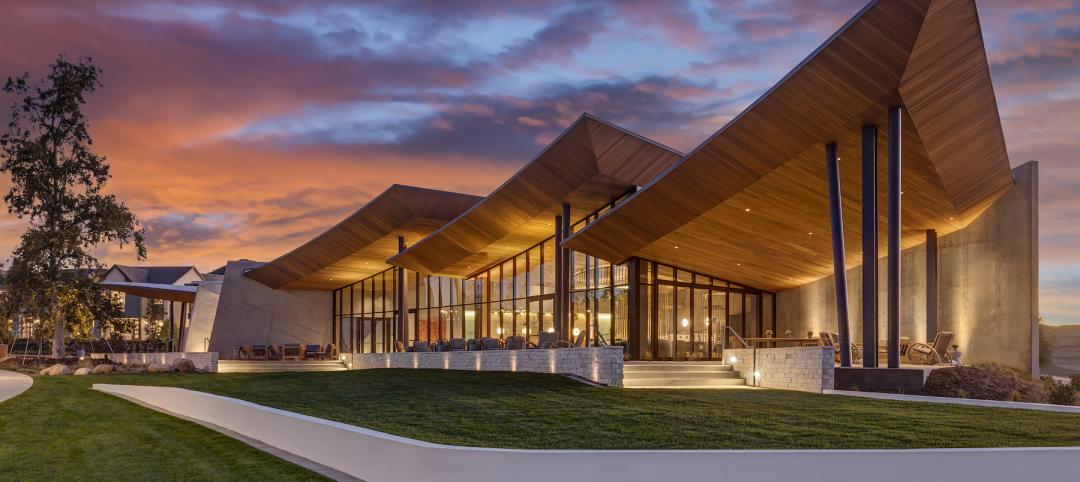HDR, a global architectural firm based in Omaha, Neb., has joined forces with CEI Architecture, a Vancouver, B.C.-based firm with about 70 employees.
The merger went into effect on July 26. As it has in other countries, such as Germany and Australia, in which it expanded through acquisitions and then combined its name with the acquired company’s, HDR now goes to market in Canada as HDR|CEI. The corporation is based in Omaha.
HDR has had a presence in Canada since 1996, when it started with a project office in Toronto. It expanded in Canada by acquiring Kingston, Ont.-based Mill & Ross Architects in August 2007, and G+G Partnership Architects, a healthcare design firm, in 2009. Those offices consolidated into one in Toronto, which currently has about 120 employees.
The CEI deal is HDR’s first foray into western Canada, according to a company spokesperson, who adds that HDR’s offices in Toronto, Kingston, Ottawa, and London, Ont., will continue to operate as before.
CEI, which was founded in 1996, focused its attention on western Canada, with offices in Edmonton and Calgary, Alberta, and in the British Columbia cities of Victoria and Penticton, according to Canadian Architect magazine.
Doug Wignall, AIA, HDR’s President, said the alliance brings together two firms with similar philosophies about design, business orientation, and customer service. Both firms have particular expertise in public-private partnerships in the healthcare sector.
“This common platform is essential to building a solid foundation for future growth,” said Wignall.
CEI’s Founding Partner, Bill Locking, is now a Senior Vice President with HDR|CEI. He believes this merger will help HDR expand into new sectors in Canada such as recreation, K-12 education, and commercial development.
Locking says news of the union has received overwhelmingly positive responses from key clients, who “understand that we will remain the same highly professional team.”
What is changing, he said, is the firm’s capability to deliver global research, benchmarking, and professional expertise.
HDR, founded in 1917, has more than 1,450 architecture employees working in offices that provide complete design, engineering, planning, and consulting services in the U.S., Canada, United Arab Emirates, Germany, Australia, and the People’s Republic of China.
All told, HDR has 10,000 employees in more than 225 locations around the world.
Related Stories
| Aug 23, 2022
New Mass. climate and energy law allows local bans on fossil fuel-powered appliances
A sweeping Massachusetts climate and energy bill recently signed into law by Republican governor Charlie Baker allows local bans on fossil fuel-powered appliances.
Giants 400 | Aug 22, 2022
Top 100 Science + Technology Facility Architecture + AE Firms 2022
HDR, Flad Architects, Gensler, and DGA top the rankings of the nation's largest science and technology (S+T) facility architecture and architecture/engineering (AE) firms, as reported in Building Design+Construction's 2022 Giants 400 Report.
Giants 400 | Aug 22, 2022
Top 85 Laboratory Facility Architecture + AE Firms for 2022
Flad Architects, HDR, DGA, and Payette top the ranking of the nation's largest science and technology (S+T) laboratory facility architecture and architecture/engineering (AE) firms, as reported in Building Design+Construction's 2022 Giants 400 Report.
Giants 400 | Aug 22, 2022
Top 85 University Engineering + EA Firms for 2022
AECOM, Jacobs, Salas O'Brien, and IMEG head the ranking of the nation's largest university sector engineering and engineering/architecture (EA) firms, as reported in Building Design+Construction's 2022 Giants 400 Report.
Giants 400 | Aug 22, 2022
Top 150 University Architecture + AE Firms for 2022
Gensler, CannonDesign, SmithGroup, and Perkins and Will top the ranking of the nation's largest university sector architecture and architecture/engineering (AE) firms, as reported in Building Design+Construction's 2022 Giants 400 Report.
| Aug 22, 2022
Gainesville, Fla., lawmakers moved to end single-family zoning
The Gainesville City Commission recently voted to advance zoning changes that would allow duplexes, triplexes, and quadplexes to be built on land currently zoned for single-family homes.
| Aug 22, 2022
For Gen Z, “enhanced communication” won’t cut it
As the fastest-growing generation, Generation Z, loosely defined as those born between the mid-1990s and early 2000s, has become a hot topic in conversations surrounding workplace design.
| Aug 22, 2022
Less bad is no longer good enough
As we enter the next phase of our fight against climate change, I am cautiously optimistic about our sustainable future and the design industry’s ability to affect what the American Institute of Architects (AIA) calls the biggest challenge of our generation.
Giants 400 | Aug 21, 2022
Top 110 Architecture/Engineering Firms for 2022
Stantec, HDR, HOK, and Skidmore, Owings & Merrill top the rankings of the nation's largest architecture engineering (AE) firms for nonresidential and multifamily buildings work, as reported in Building Design+Construction's 2022 Giants 400 Report.
Giants 400 | Aug 20, 2022
Top 180 Architecture Firms for 2022
Gensler, Perkins and Will, HKS, and Perkins Eastman top the rankings of the nation's largest architecture firms for nonresidential and multifamily buildings work, as reported in Building Design+Construction's 2022 Giants 400 Report.
















